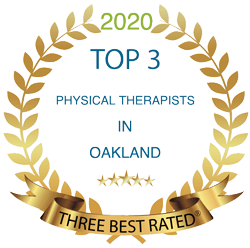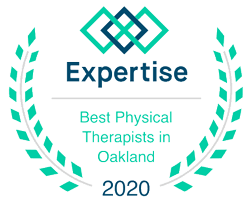You’re walking through the grocery store when the floor suddenly feels uneven. You turn your head too quickly, and your world spins. Friends say it’s just stress or dehydration, but deep down, you know something else is going on. But what is vestibular therapy, and can it actually help you?
Vertigo often seems random, but it rarely is. Your vestibular system, tucked inside your inner ear, controls your balance and orientation. When it stops working properly, even simple movements can trigger spinning, nausea, or confusion.
Vestibular therapy helps retrain that system. It restores stability, reduces flare-ups, and gives you tools to feel steady again, even when life tries to knock you off balance.
Why Balance and Vestibular Rehabilitation Therapy?
Balance is one of those things you never think about until you lose it.
Whether you’re navigating quick pivots in a rec league soccer match in Fort Worth or grinding through deadlifts at a Keller CrossFit box, your body needs a rock-solid sense of orientation to stay steady and strong.
If you’re dealing with unexplained dizziness, feeling unsteady, or losing confidence in movement, vestibular rehabilitation therapy may be the reset your system needs.
Your Vestibular System: The Body’s Balance Anchor
Your vestibular system lives inside your inner ear and sends signals to your brain about motion, position, and spatial awareness.
When it functions properly, your body adjusts automatically to changes in movement and direction. When it doesn’t, symptoms show up fast.
You might feel:
- Dizzy when you roll over in bed or get up too fast
- Unsteady when running drills or changing directions
- Off balance in visually stimulating environments like crowded gyms
- Disconnected during quick head movements or when your visual world appears to blur
These symptoms can be frustrating, especially if you’re used to relying on your body’s precision.
Conditions like vestibular neuritis, benign paroxysmal positional vertigo, and bilateral vestibular hypofunction often go undiagnosed for months.

Why Sports PT Targets Balance at a Deeper Level
As sports-focused physical therapists, we design vestibular rehabilitation therapy that fits the demands of your performance.
You can’t afford to guess where your body is in space when you’re catching air at Gateway Park mountain bike trails or logging miles at the Cowtown Half Marathon.
We take you through:
- Specific exercises to reset your vestibulo-ocular reflex
- Balance retraining that mirrors your athletic goals
- Gaze stabilization drills during dynamic tasks
- Functional movement assessments in sport-specific positions
- Targeted strengthening for head and body movements under load
This is not a generic balance program. Your treatment plan is built around your sport, your symptoms, and how your body responds to progressive vestibular disorder challenges.
Vestibular therapy helps you get back to the courts, trails, and gyms feeling sharper, faster, and more in control than you’ve felt in months.
You don’t have to live around your symptoms. AT R3 Physio, we help you move through them with purpose. Let’s figure out what your vestibular system needs to get back to work.
Reach out today to speak with a PT or schedule a Discovery Visit. Take the first step toward vestibular balance and stability at R3 Physio in Fort Worth.
What We Look For Before Building Your Plan
Before we dive into balance and vestibular rehabilitation, we perform a full evaluation to uncover the root of your symptoms. This may include:
- Repositioning maneuvers for positional vertigo BPPV
- Gait and posture analysis
- Gaze instability tests and dynamic head movement assessments
- Screening for central nervous system involvement
- Review of any hearing loss or medical conditions that affect vestibular function
Vestibular rehabilitation programs begin once we identify the right triggers.
Your brain needs accurate input to coordinate self-motion, balance, and postural control. We build that input through repetition, resistance, and control.

How We Rebuild Confidence Through Motion
Vestibular issues rob you of confidence in motion. That hesitation can lead to more instability, more symptoms of dizziness, and a higher fall risk.
To counter this, we use:
- Habituation exercises that retrain your nervous system to adapt
- Cawthorne Cooksey exercises for daily vestibular retraining
- Balance exercises that gradually challenge your ability to maintain balance under pressure
- Gaze stabilization to help your eyes identify objects even during quick head movements
- Assistive devices temporarily, only if they help improve balance without limiting recovery
Every movement becomes a signal that your body is safe again. That’s how progress sticks.

Ready to Get Your Edge Back?
Athletes and active adults across Tarrant County come in thinking their balance problems are all in their head. After vestibular therapy, they get back to the courts, trails, and gyms feeling sharper, faster, and more in control than they’ve felt in months.
You don’t have to live around your symptoms. We help you move through them with purpose.
Let’s figure out what your vestibular system needs to get back to work. Reach out today to speak with a PT or schedule a Discovery Visit. Take the first step toward vestibular balance and stability at R3 Physio in Fort Worth.




